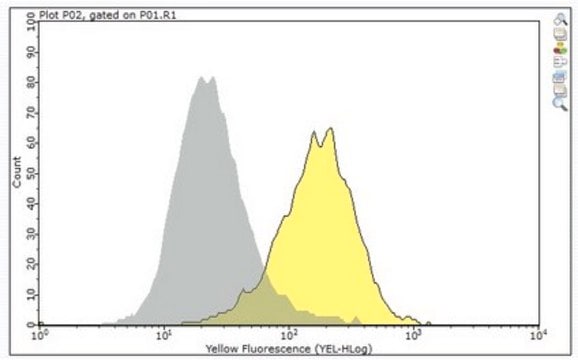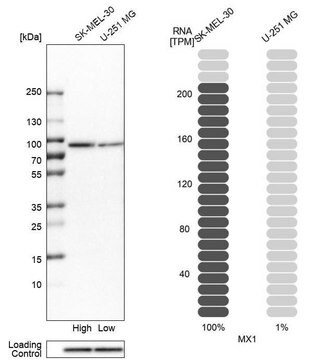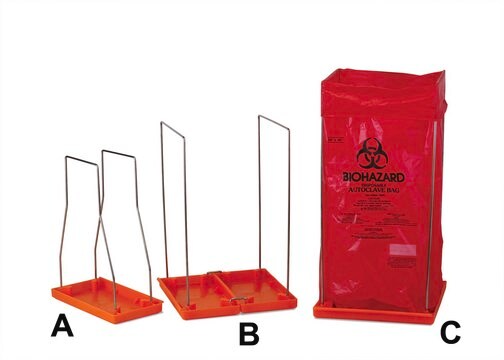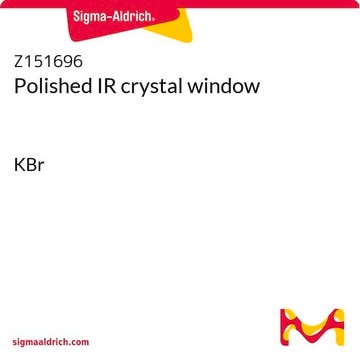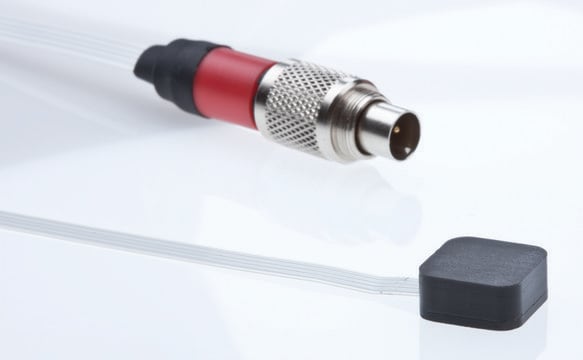MABF2119
Anti-CD318 (CD6L) Antibody, clone 3A11
clone 3A11, from mouse
Synonym(s):
CUB domain-containing protein 1, Membrane glycoprotein gp140, Subtractive immunization M plus HEp3-associated 135 kDa protein, SIMA135, Transmembrane and associated with src kinases, CD6L
About This Item
Recommended Products
biological source
mouse
antibody form
purified immunoglobulin
antibody product type
primary antibodies
clone
3A11, monoclonal
species reactivity
human
packaging
antibody small pack of 25 μg
technique(s)
flow cytometry: suitable
immunocytochemistry: suitable
immunohistochemistry: suitable (paraffin)
immunoprecipitation (IP): suitable
western blot: suitable
isotype
IgG1κ
NCBI accession no.
UniProt accession no.
target post-translational modification
unmodified
Gene Information
human ... CDCP1(64866)
Related Categories
General description
Specificity
Immunogen
Application
Immunohistochemistry (Paraffin) Analysis: A representative lot detected CD318 (CD6L) in Immunohistochemistry applications (Enyindah-Asonye, G., et. al. (2017). Proc Natl Acad Sci U S A. 114(33):E6912-E6921).
Western Blotting Analysis: A representative lot detected CD318 (CD6L) in Western Blotting applications (Saifullah, M.K., et. al. (2004). J Immunol. 173(10):6125-33; Enyindah-Asonye, G., et. al. (2017). Proc Natl Acad Sci U S A. 114(33):E6912-E6921).
Flow Cytometry Analysis: A representative lot detected CD318 (CD6L) in Flow Cytometry applications (Saifullah, M.K., et. al. (2004). J Immunol. 173(10):6125-33; Enyindah-Asonye, G., et. al. (2017). Proc Natl Acad Sci U S A. 114(33):E6912-E6921).
Inflammation & Immunology
Quality
Immunocytochemistry Analysis: A 1:1,000 dilution of this antibody detected CD318 (CD6L) in HaCaT epidermal keratinocyte cells.
Target description
Physical form
Storage and Stability
Other Notes
Disclaimer
Not finding the right product?
Try our Product Selector Tool.
Certificates of Analysis (COA)
Search for Certificates of Analysis (COA) by entering the products Lot/Batch Number. Lot and Batch Numbers can be found on a product’s label following the words ‘Lot’ or ‘Batch’.
Already Own This Product?
Find documentation for the products that you have recently purchased in the Document Library.
Our team of scientists has experience in all areas of research including Life Science, Material Science, Chemical Synthesis, Chromatography, Analytical and many others.
Contact Technical Service

